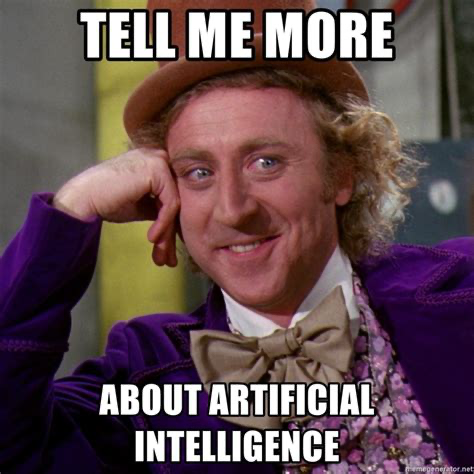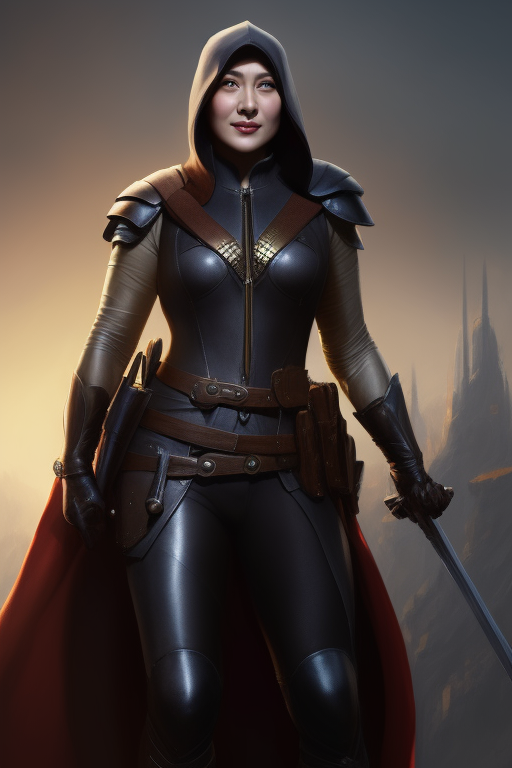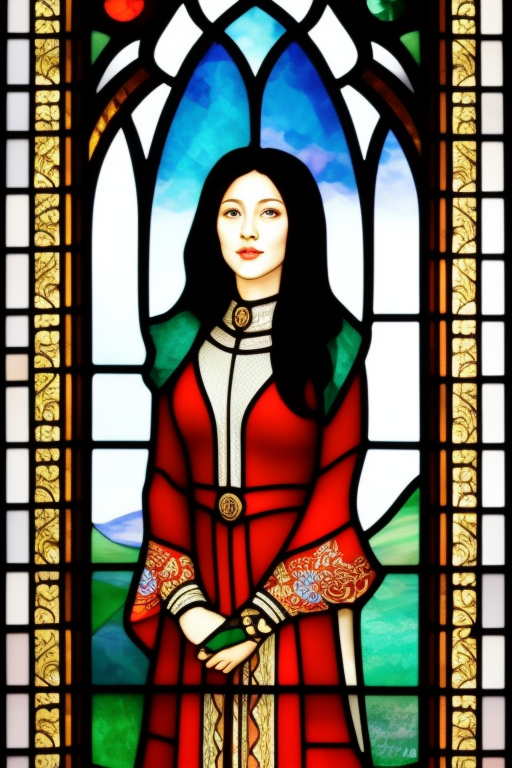Note: this is the first post in a 5-part blog series about the relationship between Oracle and AI, specifically in the EPM space.

Oracle + AI
Ever since ChatGPT was released to the public at the end of November 2022, the words “Artificial Intelligence” (“AI”) seem to be everywhere. Yet, AI has been around for half a century. Even in our EPM industry, it’s been in Planning (via Predictive Planning) for years. But now, suddenly, it’s everywhere. And it’s one of the greatest innovations coming to a software product near you.
Oracle invested in AI years ago, understanding its limitless potential. But we’ll dive more into that in the future with separate blogs post focused specifically on the Oracle EPM-AI relationship.
When AI hit Oracle Cloud EPM, to be truthful, I didn’t take much notice. It was interesting. Was it trustworthy and useful? I didn’t know yet and customers didn’t seem to be interested in it back then. Little did we all know that Oracle was creating a future that would ripen in less than a decade, putting it years ahead of its competition.
But then last year, the marriage of AI and Oracle bonked me directly on the head and I was forced to take notice. As my curiosity grew, I knew I had to do more investigative analysis. Therefore, I’ve decided to do a 5-part blog series on the topic, focused mainly on how Oracle’s AI sector impacts the EPM space.
For this inaugural series post, I thought I’d open with something fun and interesting.
My Personal Oracle + AI Avatar Journey
Last fall, the Oracle ACE program offered a special treat to its elite members. Avatars.
Oracle ACEs would be granted superhero and fantasy anime versions of ourselves just for the asking. Starting with the Oracle ACE Directors, we were eligible to request a voucher to secure our personally generated avatars. After I went through the process and reviewed the results, I was astonished.
In a nutshell, here’s how it worked. We submitted our one-time voucher code to a special Oracle website. We had a limited amount of time to upload 1-2 dozen recent photos of ourselves. The request was specific—we had to submit pictures of varying angles and profiles of our faces. Then after a few hours, we’d receive an email confirmation that our avatars were ready. Finally, we had a restricted amount of time to download them before all of our personal data and photos were expunged.
I uploaded ~18 photos, mostly of varying angles of my face. All photos were taken in the past 5 years. In a few hours, my avatars were ready. I downloaded them the next day.
Here are some of the more interesting ones:





Out of the 32 avatar photos generated, I would say ~7 look kind of like me. The rest (see below for some examples), didn’t quite hit the mark. But it was a fascinating experiment.





I went back to the emails and communications to our ACE team to understand how this awesomeness was generated.
Only then did I realize that *Oracle* was behind this AI technology.
So I started asking questions.
The Oracle WEDO Team
The ACE team directed me to Sofia Pascual Armstrong, a GenO WEDO Specialist located in EMEA. We set up a call and chatted about what her branch of the AI group does and how this avatar program came to be. What I was given was a stark reminder of the vastness of the Oracle ecosphere and the innovative strides they’re making in multiple technology areas. What her team specifically works on is nothing short of something you’d see featured in a Wired magazine article.
Sofia’s team focuses on special projects related to Oracle and AI, working with an information base that mostly assists sales. Her team is called WEDO and it was created ~8 years ago. Although she’s relatively new to the team, their day-to-day involves generating customer and special event demos and also implementing Oracle’s solutions in real life. The purpose of her team is to show companies what Oracle is capable of and to demonstrate its groundbreaking abilities.
So, basically, they get to play all day on cutting-edge technology, entertaining super interesting customer use cases. 🤯
By the way, she loves her job.
I asked her to give an example of one such use case and she discussed a customer in EMEA. Over 90% of the popular fruit, dates, are grown in the Middle East. Her team created a program using a solution called AI Vision that could detect different types of dates and return their nutrition facts.
Another use case was for a car insurance company. Users could take a picture of a car they liked on the street and Oracle could identify the model also using AI Vision. Then, using generative AI (“GenAI” to the cool kids), it would provide a financial assessment to help the user understand if they could afford to purchase the vehicle. Finally, it could evaluate the chosen model to determine if it was the most suitable for the customer based on their personal lifestyle.
One final use case worth mentioning is an iteration of AI and GenAI her team called “WEDO Market”, a grocery store scanning system that was created for the annual tech event Leap in Saudi Arabia. It could create recipes based on what groceries you had, while also informing you which ingredients were missing from a single picture.
A key technology in these use cases is AI Vision, one of the services provided in the Oracle AI Services stack. It wasn’t developed by her team or within GenAI services, however, it has helped the WEDO team run various demos over the years. In a previous version of GenAI, her team did create an image detection program. It could review an image and then tell you what kind of object the image displayed (i.e. a license plate, etc.).
Her team foresees a lot of applications for the different types of GenAI they’ve deployed. And they can serve a wide variety of industries and customers.
The Oracle + AI Avatar Tech
Next, I asked Sofia what exactly was in that black box for the GenAI avatar technology. What types of programs are being used behind the scenes? What kind of computing power are we talking about?
They mostly use Visual Builder Cloud Service (a low-code app cloud service) which is integrated with OIC (Oracle Integration Cloud). Together, they are using more than 10 different Oracle solutions. When they partnered with the ACE program to create our avatars, everything was built using this system of tools, including the website which validated our vouchers and provided a place for us to upload our pictures and download the results.
They built an entire process that guides the team through the generation of the avatars. It’s an automatic process within OIC that has some manual steps built into it. The approval of the voucher and the final avatars are manual. Everything else is automatic.
To help me understand better, Sofia guided me through what happens after our personal photos are uploaded for avatar generation. First, the team has to wait until they have a few people’s requests backed up, as it takes a while to run and takes up an obscene amount of processing, i.e. multiple virtual machines (GPUs). They handle each person’s avatar request one by one.
The rest of the process takes ~30 minutes to 1.5 hours, depending on the GPU hardware selected. Once the photos are received, the system detects people’s faces and performs smart crops. Then the model is trained. It takes some time to complete this step, hence the need for vouchers and gatekeeping. They use Nvidia GPUs, video GPUs, and other hardware for this portion. It’s quite expensive. “It’s a lot of infrastructure that holds it all together,” Sofia commented.
Once the model is trained, they use an open-source Stable Diffusion app to generate the avatar pictures. Next, they complete a manual step to spot-check the output. They have to ensure the resultant stash of avatar photos look normal. Once the verification is completed, email notifications are sent by the system to the requesting user. At that point, the new avatars can be downloaded. When the download expiration period is up, the user’s personal data is destroyed.
Rinse and repeat.
The Future of the Oracle + AI Avatar Tech
I asked what other use cases exist specificially for this avatar program. Sofia said for now they have received requests for “fun” avatars, but from various sectors.
Imagine a use case for a company with an “avatar bar”. Employees, clients, and partners could get pictures taken live, then have a superhero avatar generated by the end of the event. Greatness!
The avatar program was started ~2 years ago and has been running for over a year and a half now. It’s been highly popular and has given nice exposure to this team. Their tech has been used at many marketing events in the past with great success.
Any Downsides?
If you look into AI, you’ll hear both the good and the bad. Trust is a key concern. Runaway, sentient AI taking over the world is the extreme scenario you see portrayed in sci-fi movies. Potential, nefarious uses of this technology when put into the wrong hands has many people anxious, especially when it comes to personal data and privacy.
Sofia didn’t mince words when I broached this topic. She was clear to state up front they don’t create AI that poses a danger to society. Although AI seems like a black box to most of the world, it’s still a programmatic language with limitations.
With the avatar generation program, the team did have concerns about the personal pictures provided. What would happen to them? She said they had a clear agreement that privacy should be respected and not invaded. In addition, in the EU, there are strict regulations and policies (at least, more so than the United States) they had to follow. Sofia explained why customers and partners don’t need to fear Oracle’s integration of AI.
First, Oracle is a very safe cloud technology. Anyone who’s been a customer of it has already seen proof of this. Has anyone heard of Oracle Cloud being hacked? It gets patched all the time to prevent malware. Every year we still hear in the news about Fortune 1000 company networks being breached. Yikes.
Second, her team (and others at Oracle) have intentionally made privacy a high consideration. They created safeguards for this purpose. For instance, they developed a system where individual team members aren’t able to access anyone’s personal photos directly. In addition, they ensured the inbound and outbound photos are destroyed within a certain amount of time.
Finally, Sofia would like to remind everyone that AI doesn’t have free will. As she commented, “it’s not God and is not capable of doing everything.” AI is coded by humans and will continue to have constraints.
Opal’s PSA: A user’s first exposure to AI is often with ChatGPT and not Oracle’s AI. As you embark on your own personal AI journey, please proceed with caution. Sofia mentioned with GPT-4 you can now upload pictures. There is a valid concern around the downstream impacts of this capability. For instance, hackers can take advantage of images in ways unforeseen by the tech, like embedding malware into them. GPT-5’s release is on the horizon, bringing with it the potential of video uploads. What loopholes does that expose? And for Pete’s sake, don’t upload any sensitive company data to ChatGPT!
Resources
In the next post in this series, I’ll do an introduction of Oracle + AI in the EPM apps world.
A big shout out to Sofia and her amazing team and the ACE program for giving us ACEs a first-hand experience of this amazing technology.
Curious about Oracle’s AI technology? Here are some resources provided by Sofia:
- https://www.oracle.com/artificial-intelligence/
- https://www.oracle.com/artificial-intelligence/generative-ai/
- https://www.oracle.com/ai-infrastructure/
The Full Oracle+AI Blog Series
Did you miss a post? Here is the YTD list of posts in this Oracle + AI blog series:


Opal! this is a great blog, i really appreciate the insight in to a totally different relm within the Oracle world. I had no idea, thanks for sharing!
LikeLike